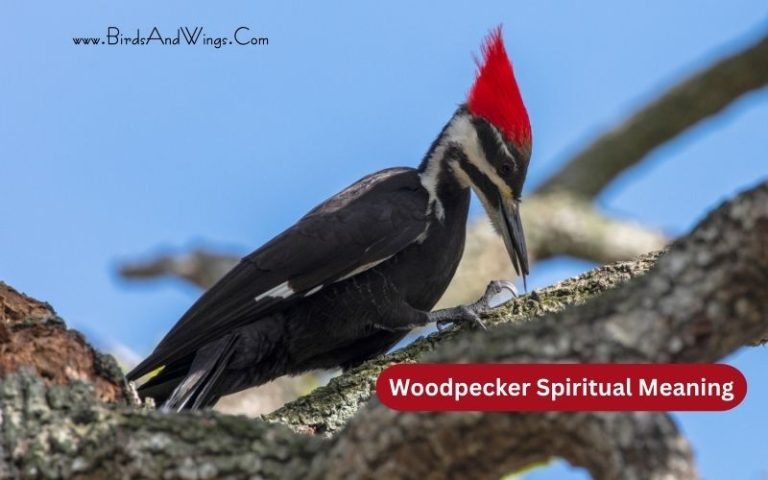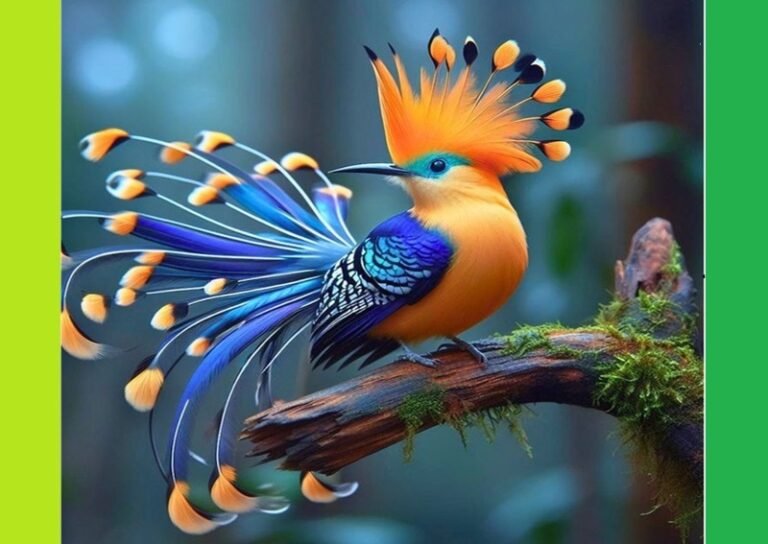Hawks in Georgia – 10 Species With Pictures
Want to know about top hawks in Georgia? Alright, you’re in the right post.
Hawks are incredible birds of prey for their unique abilities, like sharp eyesight, unique hunting skills, and powerful flight. Georgia is known for its diverse growth of subspecies in hawks with their habitats and rich biodiversity.
This article will explore the top 10 species of Hawks in Georgia by providing their physical characteristics, habitat preferences, feeding habits, breeding behaviors, conversation status, and interesting facts about them. So let’s dive into the diversity of Hawks in Georgia.
Top 10 Hawks in Georgia
Georgia is famous for its diversity of Hawks species. These hawks have special adaptability features to adjust and modify their bodies to the environment and ecosystems of that region.
This section will briefly describe the top 10 species of Hawks in Georgia and their unique characteristics.
1. Red-tailed Hawk (Buteo jamaicensis)
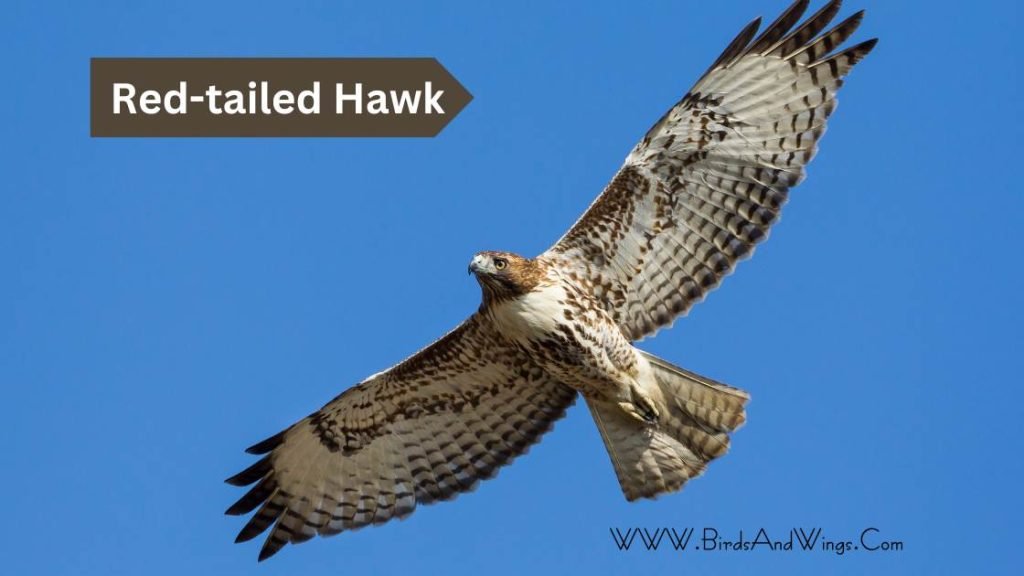
Red-tailed hawks are large prey birds and have wide wingspan. Their wingspan is around 5 feet, and their weight is around 1.5 to 3.5 lb. They have dark brown plumage on their back and red tail.
Their beak is short and curved downwards with yellow feet. For habitats, they prefer tropical forest areas, grasslands, wetlands, and open fields like agricultural fields. They are incredible hunters and give surprise attacks on their prey from their perches.
As they are the prey birds, they eat reptiles, birds, small mammals, and carrion. They build their nests with sticks in trees and on the cliffs. They are loyal partners and choose one mate for a longer time. They also return to their old nests over the years.
2. Cooper’s Hawk (Accipiter cooperii)
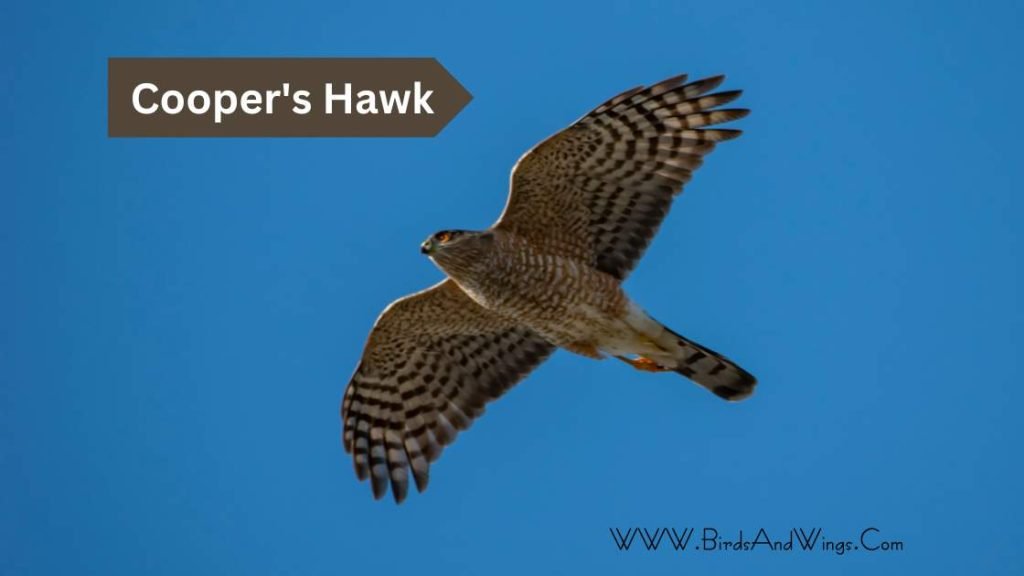
Cooper’s Hawk is an average-sized prey bird. They are familiar in North America and Southern Canada. Their feathers are in brown-gray or blue-gray color with thick feet with red to orange eye color. Their beaks are pointed downward.
As prey birds, their beaks are enough to tear flesh and meat effortlessly. They can be seen in wooded areas and forests in Georgia. They also eat birds, reptiles, lizards, frogs, and snakes. During the display performance, Cooper’s Hawk tries to threaten others while stretching its wings and tails and lowering its head.
They migrate from August to mid-October. Sometimes it extends to November as well. They can quickly adapt to urban areas and are known for their agile flight behavior.
3. Broad-winged Hawk (Buteo platypterus)

Broad-winged hawks have broad wings around 74 to 100 cm long. They have dark brown plumage over their bodies with short tails. During the summer, their distribution is in North America; later, they travel to the South in the winter.
Their diet is mostly at what time will be available. But they eat reptiles, insects, mammals, rabbits, and birds throughout the year. They perform courtship rituals religiously.
They perform acrobatics aerial cartwheels in the sky while performing the ritual. Both mates lock their feet while mating and unite in a spiral position.
4. Red-shouldered Hawk (Buteo lineatus)
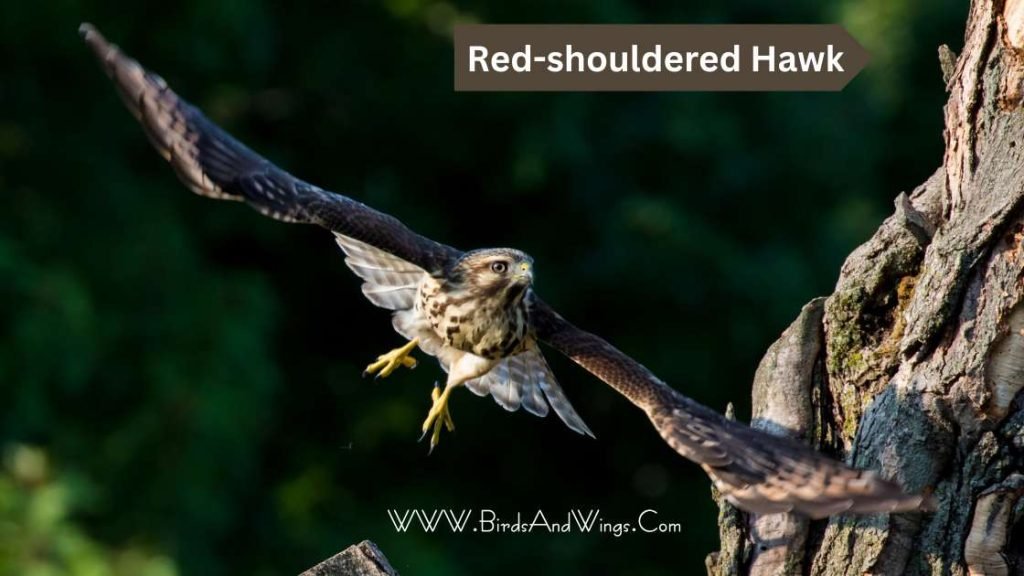
Red-shouldered Hawk is another subspecies of Hawk in Georgia. It has mixed brownish-red plumage over their bodies. Their feathers have reddish patterns with mixtures of brown-white tails and wings. They are familiar in South Florida, United States.
They are native to forest areas, wetlands areas in Georgia. Their diet has small mammals, reptiles, birds, and other insects. They prefer breeding around watery areas and make nests around those areas.
5. Sharp-shinned Hawk (Accipiter striatus)
Sharp-shinned hawk bird is a small prey bird in Georgia. It has blue-brown plumage on its back and orange-white plumage on its chest. Their wings are about 58 to 68 cm, weighing around 150 to 219 grams.
They are familiar with woodlands and forest areas in Georgia. They have agile flight ability. They are familiar with deep, dense forest areas in North America and Central America.
6. Northern Harrier (Circus Hudsonius)
Northern Harrier has another name which is ring-tailed Hawk or marsh hawk. They have small faces with dark brownish plumage over their bodies. Their approximate wing length is around 3 to 4 feet.
Their body weight is around 290 to 40 grams. They have long wings and tails compared to other hawk species. They eat squirrels, rats, and birds to hunt.
7. Osprey (Pandion haliaetus)
Osprey is also familiar to sea, river, or fish hawks. They have a 180 cm long wingspan. Their head is white, and body is covered with dark-brown feathers. Their chests and belly parts have white plumage.
They can be familiar with Alaska and Newfoundland during their breeding. They can utilize fish reflection into the water and dive to hunt them. These hawks can live around 8 to 10 years.
They have become the red zone species because other people collect their eggs or hunt them.
8. Swainson’s Hawk (Buteo swainsoni)
Swainson’s Hawk is an enormous bird’s wide wingspan. They are also similar to grasshopper hawks. Their body has a strip feature with dark brownish plumage. They can be familiar in North America during summer and winter in South America.
They also eat reptiles, rabbits, and insects for a living. They are incredible migratory birds known for their long-distance travel from South to North. They can live up to 20 years.
After laying the egg, males, and females raise the child through parental behavior. They can fly in agile positions. These species are losing their habitats because of nature and humans.
9. Mississippi Kite (Ictinia mississippiensis)
The Mississippi kite is another unique bird with diverse appearances. They have white-blue feathers on their wings and white chests. They are familiar with woodlands, forests to live on. They can effortlessly catch their prey in the mid-air agile position.
Their primary diet is birds and reptiles like rabbits, snakes, etc. They make their nests on tall branches of trees and near watery areas. These species also face threats because of their habitat loss and many other environmental and survival aspects.
10. Peregrine Falcon (Falco peregrinus)
Peregrine Falcon is another bird with hunting ability and skills. They have blue-gray feathers on the back and white stripes on their belly and chest. Their yellow beaks are pointed downwards. They are fast flyers among other species.
They can fly over 240 miles per hour. They mainly eat pigeons, doves, and other small birds. They can catch their prey in mid-air also. These species make their nests in tall buildings or bridges.
Conclusion
In short, the top subspecies of hawk birds in Georgia represent the diversity of avian species. Each bird has their habitat, characteristics, distribution, and feeding habits worldwide.
With all these characteristics and features, these species have proven themselves as one of the most extraordinary prey birds. By observing these subspecies’ unique characteristics, bird lovers will explore their diverse worlds.





